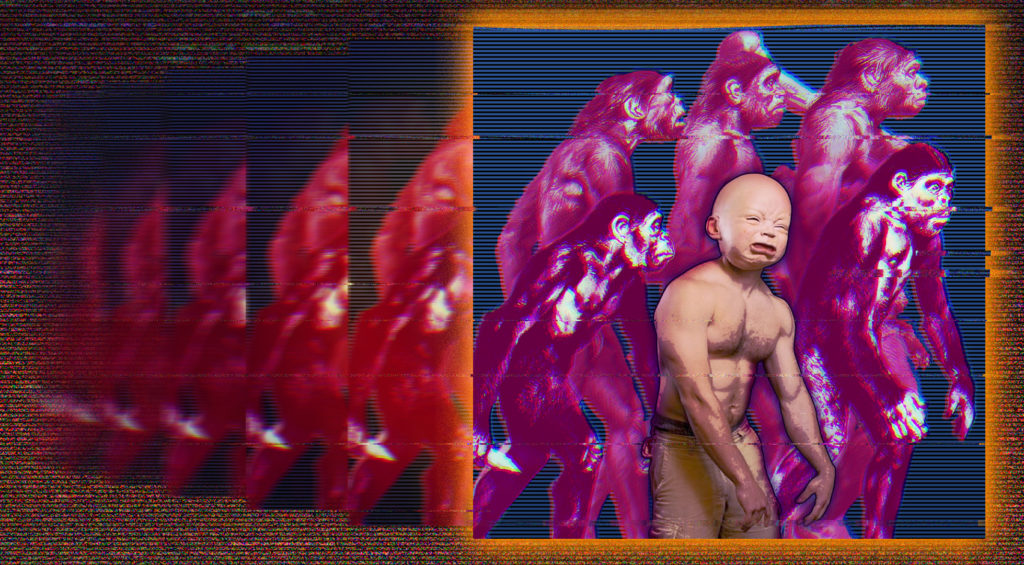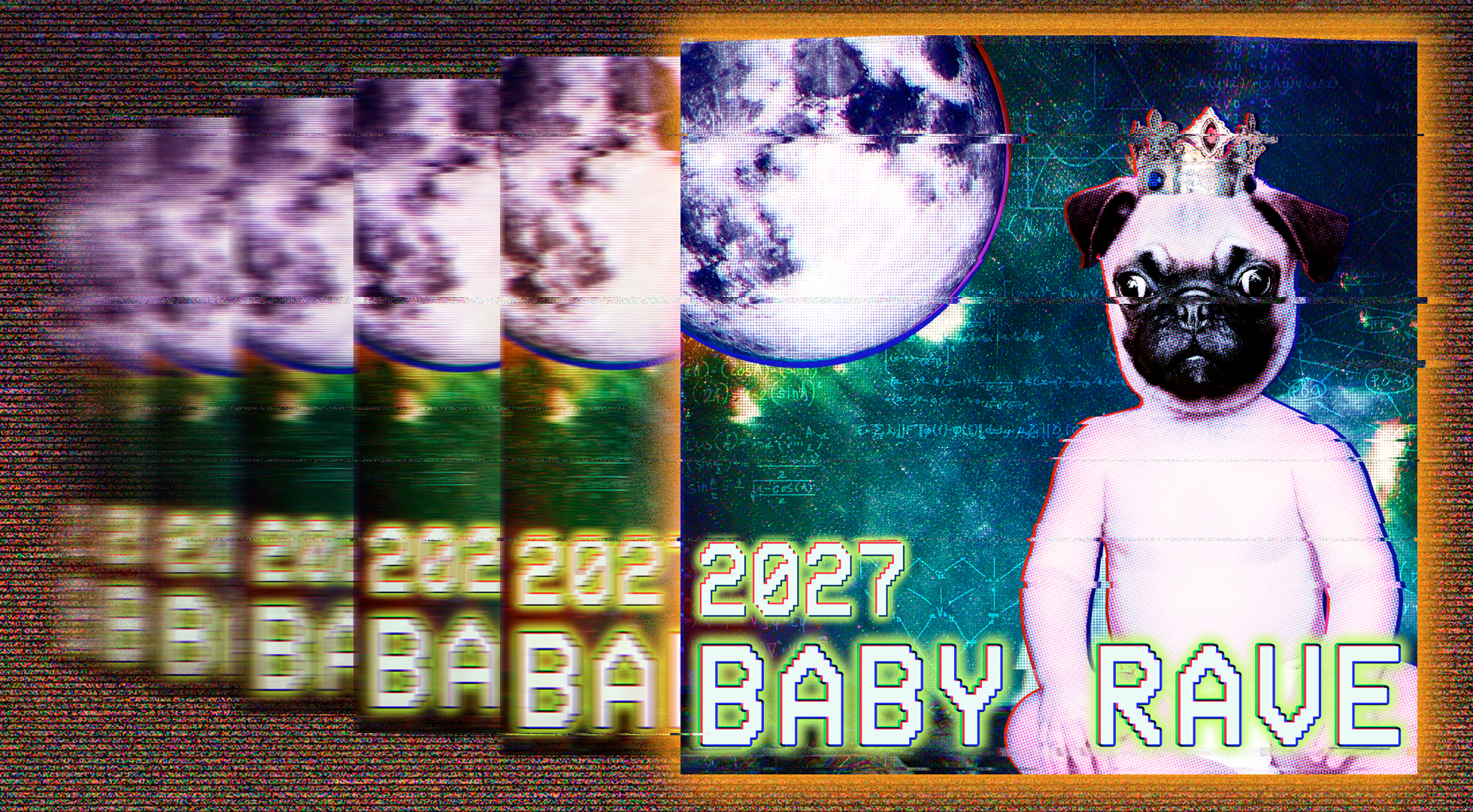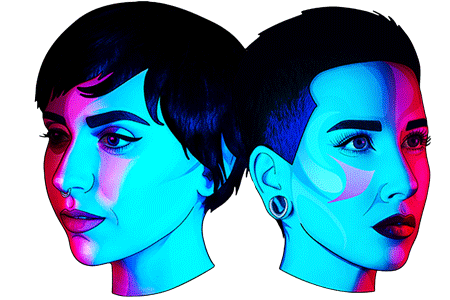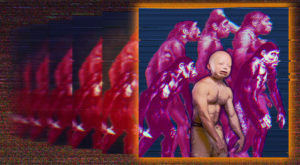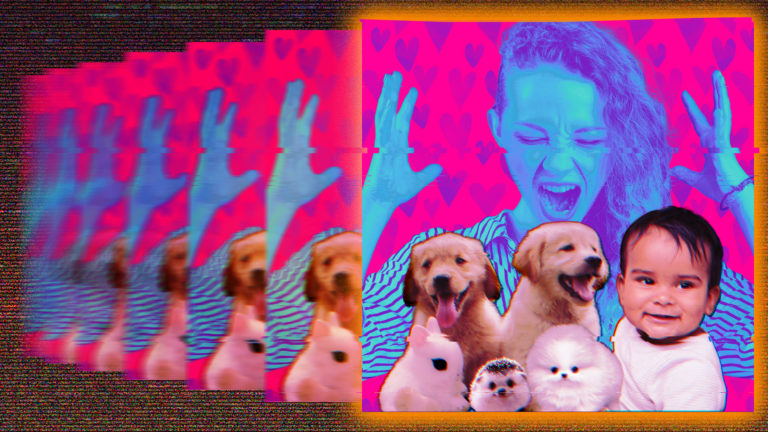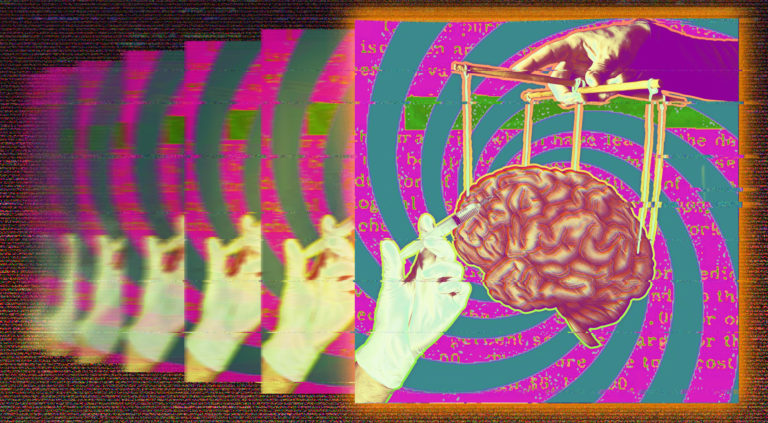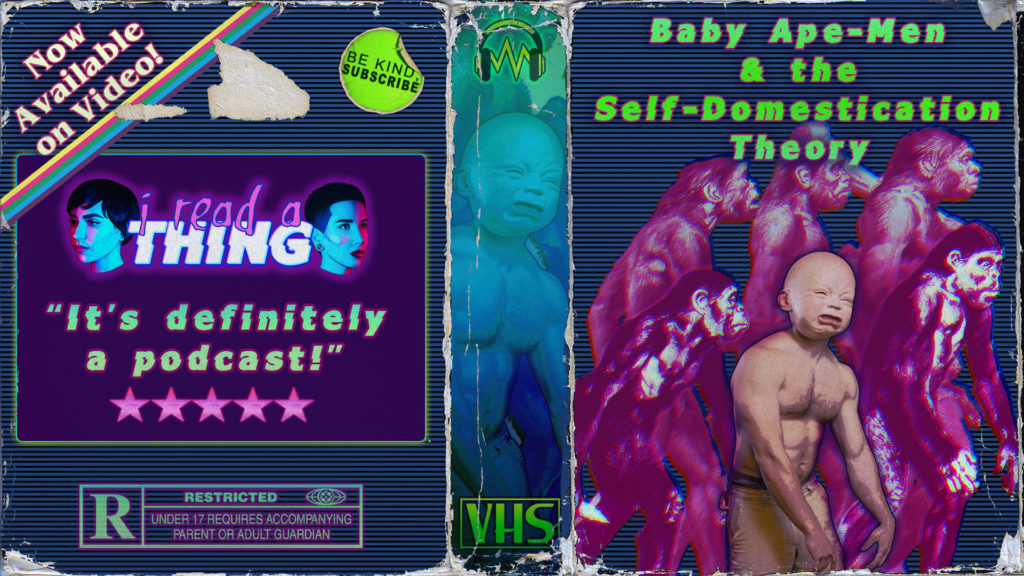
Have you ever wondered why we can’t have domesticated lions or why we don’t ride zebras? Apparently, those fuckers are crazy. Now you know. If you want a more nuanced answer, this episode explores what makes an animal domesticable, how domestication gave humans the ability to create permanent communities, and why some researchers believe humans self-domesticated because we have all the hallmarks of a pug.
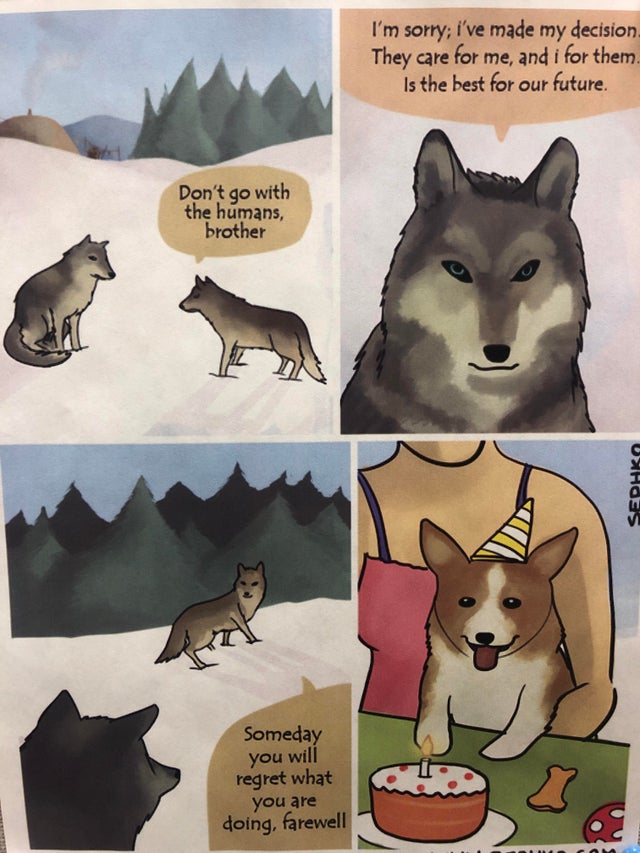
Domestication vs. Taming: What's the Difference?
A tame animal is an animal that is relatively tolerant of human presence either through natural acclimation or through training. Some people use the word tame to describe an animal that doesn’t pose a direct threat to humans but most use it to mean an animal that tolerates both human presence and handling.
Domestication and taming are SSBD (same-same-but-different). Tame refers to an animal who is tolerant of human presence and/or handling. Domesticated refers to the human intervention in breeding animals with selected traits over a long period of time until they do not closely resemble their wild counterparts. An animal can be tame and not domesticated or domesticated and not tame. Most of the time, animals who are domesticated are selected for docility and tolerance of human presence if not hierarchal deference to humans.
What We Think We Know About Animal Domestication
I don’t know if you know this, but domestication of most of our livestock, pets, and beasts of burden happened a looooooong, long time ago. Scientists don’t know FOR ABSOLUTE CERTAIN when certain animals were domesticated or what the approach of early humans was with regards to raising the animals, but they have some pretty educated guesses. As with all things dealing with shit that happened forever ago, our understanding of history is constantly evolving as we find more evidence.
A dog jawbone found in Iraq led scientists to believe that dogs were domesticated over 14,000 years ago. Although wolves are the closest relatives of dogs, scientists are able to distinguish the skeletal elements because wolf heads grow larger through adulthood, whereas that of a dog retains juvenile traits. The wolves most likely drawn to human camps were the less-aggressive, subdominant pack members with lowered flight response, higher stress thresholds, less wary around humans, and therefore better candidates for domestication.
Though dogs have been domesticated for a long time, they have undergone many changes since those earliest years, as humans have used selective breeding to create new dog breeds with desired qualities. The Romans preferred colors for their dogs: shepherd’s dogs were bred white so they did not look like wolves at night and farmyard dogs were to be black to scare away thieves. Their shapes have also changed, although smaller-bodied dogs are not a modern invention. There is evidence that a dog similar to the Pekingese, a small, vulnerable dog, lived in China in the 1st century A.D.
Later studies support the co-evolution relationship between dogs and humans through their evolution of similar (although obviously not identical) social-communicative skills in both cases adapted for certain kinds of social and communicative interactions with human beings that dogs can discriminate the emotional expressions of human faces, and that most people can tell from a bark whether a dog is alone, being approached by a stranger, playing, or being aggressive, and can tell from a growl how big the dog is. In 2015, a study found that when dogs and their owners interact, extended eye contact (mutual gaze) increases oxytocin levels in both the dog and its owner. As oxytocin is known for its role in maternal bonding, it is considered likely that this effect has supported the coevolution of human-dog bonding.
Cats are descended from five different types of wildcat, and are thought to have been first domesticated around 7,500 B.C. While they have been used as companions and pets, they have historically also been used for controlling mice and rat infestations. In fact, it is believed that cats may have first encountered humans after they were attracted to rat-infested areas where humans lived.
Though the first evidence of a domesticated cat was found in Cyprus, they are most famous for their role in ancient Egyptian society. Egyptians often mummified cats and placed them in luxurious chambers in the pyramids. There were even three feline goddesses that Egyptians worshipped.
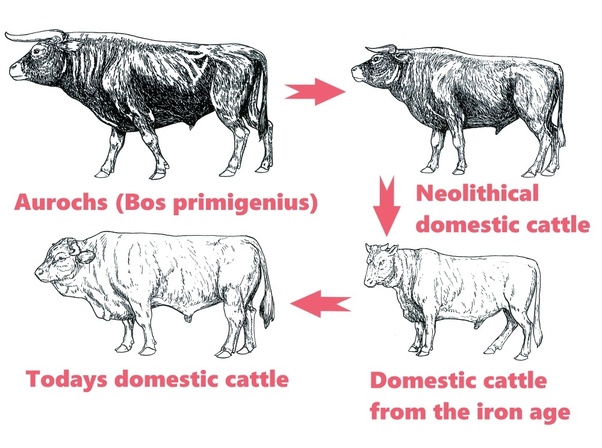
The first animals to be domesticated for food use are thought to be sheep, between 11,000 and 9,000 B.C. in Southwest Asia. Goats followed later around 8,000 BC. Both animals were used for their meat, milk, and coats, and became an integral part of nomadic communities.
Ross Tellam, a researcher at CSIRO Livestock Industries in Brisbane, Australia, said that scientists can tell when milk-bearing animals were domesticated based on when the humans in the area became lactose tolerant. “The mutation that enabled the utilization of lactose as an adult gave an enormous advantage to that population and contributed to stable human populations that had the luxury of excess calories,” Tellam said. “This helped civilizations to emerge.”
Pigs and cattle were domesticated around the same time as sheep and goats, but tended to be domesticated by more settled communities. Animals that belonged to farming communities were herded instead of immediately eaten because the farmer’s ability to tame them meant a continuous supply of meat and dairy.
“The history of human civilizations and cattle domestication are intimately intertwined,” Tellam said. “The ability of humans to maintain a reliable, high energy food source that was mobile and able to live on poor quality land was a huge advantage and this factor certainly fostered stable communities and new knowledge.”
It has been hard to pinpoint a place and time that horses were domesticated, since they were widespread and did not take on distinct morphological changes when domesticated, as observed in other animals. “Many domestic animals see a significant size drop upon initial domestication, and some animals show significant morphological change, too. Horse size does not seem to have been affected in the same way as other animals and there are no immediately visible morphological changes,” Outram said.
There have been reports of horse domestication as early as 5,000 B.C. in Kazakhstan and 4,000 B.C. in the Eurasian Steppes, a stretch of land between Hungary and Mongolia. Archaeological evidence suggests that horses were used initially for food and milk—not riding—since the teeth of these very early domesticated horses do not show evidence of being worn down by a bit (the part of the harness that fits in a horse’s mouth). The first conclusive evidence of horse riding, in the form of bit-worn teeth, was found in Kazakhstan and dates back to 3,500-3,000 B.C.
“The riding of horses was a very significant additional development. This led to a revolution in transport, trade, migration, and forms of warfare,” Outram said. “Horseback riding may have been a key component in the fast spread of culturally important ideas and technologies.”
Horses have provided a means of transportation for thousands of years, even beyond horseback riding, as exemplified in the horse-drawn chariots of Mesopotamia in 2,000 B.C. Up until modern times, horses have played a key role in warfare and have provided transportation to the masses.
Many would not consider honeybees to be a domesticated animal, and while they can be aggressive, humans have found a way to control them. Honeybee domestication could date back further still, to 4,000 B.C., since researchers believe honey bee domestication began with indigenous tribes all over the world that would harvest honey from nests for food. There is actually a genetic difference in domesticated bees and their feral counterparts, though there seems to be a mechanism that will allow a domesticated honeybee to revert to a hybrid wild type more genetically diverse than the parent race.
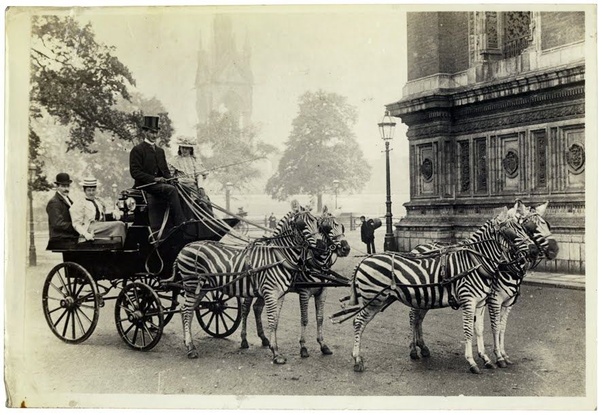
What Makes an Animal Domesticable
- Diverse/Easy Food Preferences – We have tried (and failed) to domesticate cheetahs. They are as gregarious as you can get in a big cat species and, although they are typically solitary for most of their lives in the wild, when tamed, they seem to enjoy the presence of their human caregivers. The main problem we ran into was that they eat a lot of meat. Obligate carnivores were almost impossible to domesticate because meat was a valuable resource for early humans and we couldn’t spare enough to keep and breed cheetahs. Omnivore animals are preferred and they have to not be picky about what they eat.
- Rapid maturation – I can’t fault humans for trying to domesticate elephants, they are adorable, intelligent, and formidable. While elephants have been tamed for use in wars (yikes), as beasts of burden, and as exotic pets of sorts, their long gestation and maturation rates make raising and domesticating them on a large scale completely out of the question. Elephants gestate for 20 months and aren’t sexually mature until fifteen years of age. Domesticable animals must have a fairly quick maturation rate.
- Willingness to breed in captivity, fecund – There is some evidence that pandas have inadvertently been semi-domesticated due to breeding in captivity, but such breeding has been hard-won by keepers. Pandas tend to have a difficult time breeding under controlled circumstances and panda cubs were previously difficult to raise to maturity due to humans not understanding how to take care of them. Bovine species, by comparison, readily mate in pretty much any circumstance and farm pigs are sexually mature at six months and can carry litters of up to twelve piglets.
- Docility and/or tolerance for humans – The weirdest factoid I found during this search, beyond the entirety of domestication being weird and fascinating, was that Americans had a bonkers idea to take care of an invasive species of water hyacinth in Florida by DOMESTICATING HIPPOS. Ok, so, if you aren’t aware, hippos kill around 500 people in Africa every year. They are wildly aggressive, huge, and surprisingly agile. So, like, of course we couldn’t domesticate them. Dodos, on the other hand, were so docile (technically, they were island tame) that they didn’t know to run from humans and that’s why they are extinct.
- Social hierarchy that is modifiable by humans – Surely everyone has wondered why we can ride horses but we can’t ride zebras. The answer is: Zebras are HORRIBLE SOCIOPATHIC ASSHOLES. Zebras herd, so a lot of people think they must have some sort of family values or hierarchy…NOPE. Zebras herd because they know there is safety in numbers, but zebras don’t give a fuck about any other zebra. They will not defend another member of their herd and they are wildly aggressive with each other. Because zebras don’t give a shit about anything or anyone, they also don’t give a shit about the human trying to tame them. They will buck, bite, and generally maim anyone who fucks with them and feel absolutely nothing about it. Don’t get me wrong, I still love zebras, but shit…savage. Horses, on the other hand, have a strict hierarchy, so all you have to do is become dominant over the head horse and you’ve got the whole herd on your side.
How Domestication Changed Humans
Domestication of plants and animals allowed humans to dump the migratory lifestyle of hunter-gatherer tribes and settle stable communities. These stable communities created a more conducive environment for information sharing, culture development, and breeding among early hominids with advantageous traits such as less reactive aggression and larger prefrontal lobes.
Some suggest that domestication of animals signifies a transference of tool making from inanimate objects such a stone and wood to animate. Animals were used for protections, as a food source, and as aids in hunting larger prey. I have also seen suggestion of our learned communication with other species of mammal as a precursor to our complex vocalizations, but it seems like this was also related to changes in our skeletal structure allowing for more flexible vocal cords and our larger brains.
Anthropologists suggest that the information required to properly maintain herds as well as developing systems of domestication may have resulted in the need for long-term data collection resulting in the creation of figurative art (ie written language). Again, this is just a suggestion, not a solid fact.
The consistent food source could have allowed for brain development over time as a bigger brain with more connections metabolizes food faster which would require more readily absorbed nutrition. It’s a real chicken-egg situation. Basically, everything had to work in tandem for us to be able to become the baby ape-men we are today.
Domestication Syndrome
More than 140 years ago, Charles Darwin noticed something peculiar about domesticated mammals. Compared to their wild ancestors, domestic species are more tame, and they also tend to display a suite of other characteristic features, including floppier ears, patches of white fur, and more juvenile faces with smaller jaws.
From Darwin’s survey of the animal breeding work, he found that domesticated mammals in general exhibit a suite of behavioral, physiological, and morphological traits not observed in their wild forebears. Today, the full set of these characteristics is known to include: increased docility and tameness, coat color changes, reductions in tooth size, changes in craniofacial morphology, alterations in ear and tail form (e.g., floppy ears), more frequent and nonseasonal estrus cycles, alterations in adrenocorticotropic hormone levels, changed concentrations of several neurotransmitters, prolongations in juvenile behavior, and reductions in both total brain size and of particular brain regions.
Neural Crest Cells
Neural crest cells are formed near the developing spinal cord of early vertebrate embryos. As the embryo matures, the cells move around to create a lot of different types of tissues. These tissues include pigment cells and parts of the skull, jaws, teeth, and ears — as well as the adrenal glands, which are the center of the “fight-or-flight” response. Neural crest cells also indirectly affect brain development.
So, the first animals brave enough to be tolerant of us were probably working with inadequate adrenal glands as a result of neural crest cell deficiencies in utero. We typically bred the tamest of these animals which leads to that recessive gene becoming dominant so we’re indirectly breeding for this deficiency in our domesticated animals.
Among other effects, neural crest deficits can cause depigmentation in some areas of skin (e.g. white patches), malformed ear cartilage, tooth anomalies, and jaw development changes, all of which are seen in the domestication syndrome. The authors also suggest that the reduced forebrain size of most domestic mammals could be an indirect effect of neural crest changes, because a chemical signal sent by these cells is critical for proper brain development.
Humans also exhibit a lot of signs of neural crest cell deficiencies, with some of our genetic syndromes being a direct result and showing the most obvious signs of domestication syndrome.
Humans also exhibit a lot of signs of neural crest cell deficiencies, with some of our genetic syndromes being a direct result and showing the most obvious signs of domestication syndrome.
Waardenburg’s is a relatively common but highly variable genetic disease. The overall effects include the primary signs (deafness and pigmentation changes, particularly a white forelock) along with many other more variable symptoms, including white skin patches, cranial dysmorphology, very pale eyes, and absence of the enteric nervous system (Hirschsprung’s disease). All of these variable symptoms indicate disrupted NCC-related development. Neural-crest-derived melanocytes provide a required input to the inner ear, without which deafness results (cf. Jackson 1994), and the ganglia and neurons of the enteric nervous system, like the sympathetic nervous system, are derived from neural crest (Hall 1999; Gilbert 2003).
Similarly, scientists are looking at a rare genetic mutation called Williams Syndrome to explain the history of human cooperation and domestication. Williams syndrome affects about one person in 10,000, and some who have it are so impulsively affectionate, and so devoid of our typical social inhibitions, that they will hug complete strangers on the street, says Jocelyn Krebs, the president of the Williams Syndrome Association (WSA) and the mother of a boy with the condition. “There is a desperate need for human contact, and they have zero social anxiety about the approach and opening [of a conversation],” she says.
Besides their gregariousness, people with Williams syndrome have a distinctive physical appearance, with delicate features such as a small, upturned nose and a pointed chin. And the condition often comes with a constellation of challenges and health risks, including learning difficulties, poor movement coordination, digestive issues, and life-threatening cardiovascular illness.
Neoteny: Baby-Face Extreme
Neoteny, also called juvenilization, is the delaying or slowing of the physiological (or somatic) development of an organism, typically an animal. Neoteny is found in modern humans. In progenesis (also called paedogenesis), sexual development is accelerated. Both neoteny and progenesis cause the retention in adults of traits previously seen only in the young.Neoteny - Wikipedia Article
Self-Domestication & Island-Tameness
Self-domestication is described by biological anthropologist Richard Wrangham as being in an environment where lessening of aggression was beneficial for survival.
Island tameness is the tendency of many populations and species of animals living on isolated islands to lose their wariness of potential predators, particularly of large animals. The term is partly synonymous with ecological naïvete, which also has a wider meaning referring to the loss of defensive behaviors and adaptations needed to deal with these “new” predators. Species retain such wariness of predators that exist in their environment, for example a Hawaiian goose retains its wariness of hawks, but loses such behaviors associated with mammals or other predators not found in its historical range. The most famous example is that of the dodo, which owed its extinction in a large part to a lack of fear of humans, and many species of penguin – which, although wary of sea predators, have no real land predators and therefore are very unafraid and curious towards humans.
A recent comparison of 66 species of lizards found that flight initiation distance (how close a lizard allows a human “predator” to approach before it flees) decreases as distance from the mainland increases and is shorter in island than in mainland populations. According to the authors, Charles Darwin believed that escape behavior evolved to be lower where predators were rare or absent on remote islands because unnecessary escape responses are costly in terms of time and energy.
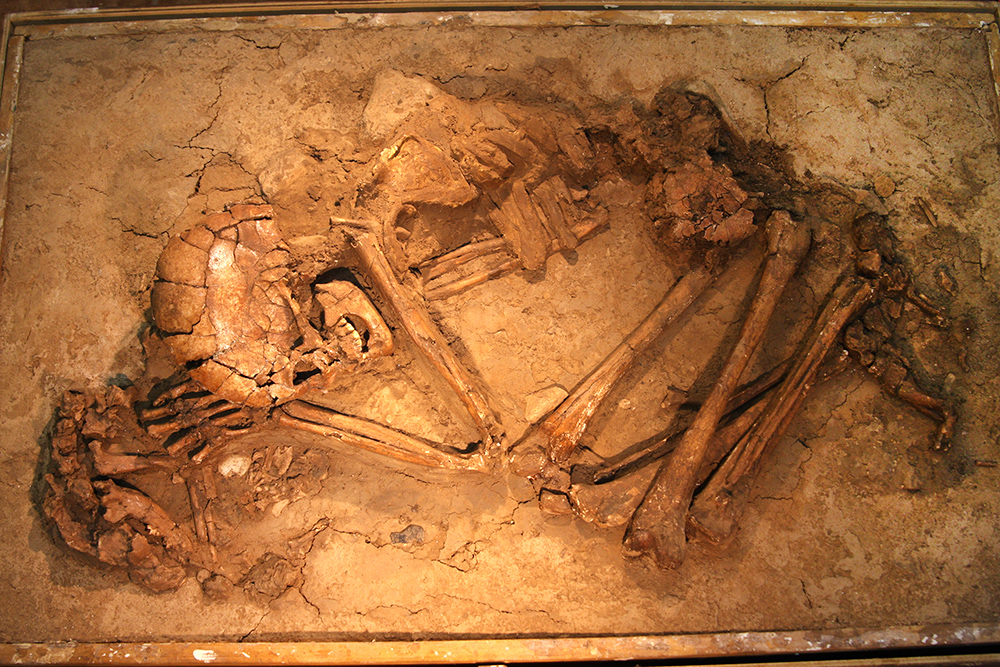
Did Cats & Dogs Self-Domesticate?
As grain plants and livestock became domesticated 9,000 years ago in the Fertile Crescent, wild cats adapted to living with humans, hunting rodents in grain stores and “abandoning their aggressive wild-born behaviors”, which led to today’s house cats. While humans may have intentionally domesticated wolves into dogs, an alternate hypothesis is that wolves effectively domesticated themselves by establishing a mutually beneficial relationship with prehistoric humans. They scavenged on the remains of the prey animals left by the prehistoric people at the human settlements or the kill sites. Those wolves that were less anxious and aggressive thrived, continued to follow the prehistoric humans, and colonized the human-dominated environments, generation after generation. Gradually, the first primitive dogs emerged from this group.
Bonobos & Chimpanzees: The Case for Self-Domestication
Anthropologist Brian Hare of Duke University’s Institute for Brain Sciences noticed that the bonobo looks like a domestic version of its closest living relative, the chimpanzee. The bonobo is less aggressive than the chimp, with a smaller skull and shorter canine teeth. And it spends more time playing and having sex. These traits are very similar to those that separate domestic animals from their wild ancestors. They are all part of a constellation of characteristics known as the domestication syndrome.
Rape, murder and warring neighbors are all regular aspects of chimp life. Bonobo societies, however, are far more peaceful. Hare thinks that the chimplike ancestors of bonobos found themselves in an environment where aggressive individuals fared poorly. By selecting for the most cooperative ones, evolution forged a “self-domesticated” ape, just as Belyaev produced domestic foxes by picking the most docile ones.
Bonobos and chimpanzees diverged from a common ancestor between one million and two million years ago, after the formation of the Congo River separated one population of apes into two. Considering that neither species can swim, the two populations “might as well have been on different planets,”
Both groups faced very different environments. Hare thinks that the northern population, which would eventually become chimps, had more competition from gorillas for their food. They were forced to compete fiercely with one another for whatever was left. Females got a particularly short shrift, and were easily overpowered by males for both sex and resources.
“In bonobo-land in the south, the story was different,” Hare explains. “The river would have protected the ancestors of bonobos from gorillas.” With more food to go around, females could gather in larger groups, form tight social bonds, and better resist the advances of males. In this land of plenty, the least aggressive males, who opted for alliances rather than brute force, were most likely to mate. South of the river, the nicer apes thrived.
As a result, Hare thinks that they started maturing more slowly. Many domestic animals evolved to become less aggressive by slowing the pace of development, so adults retained juvenile traits.
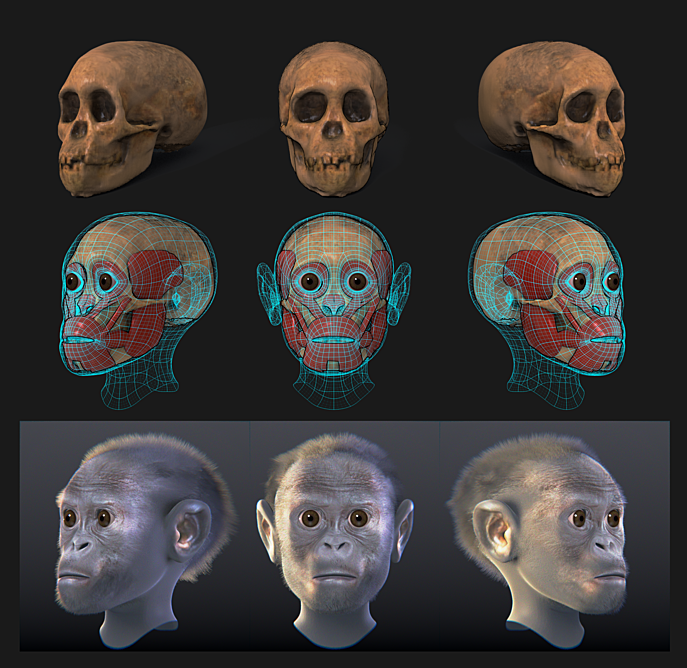
Did Humans Self-Domesticate?
Self-domestication theories describe how humans developed and evolved. “Contemporary reproductive technologies such as selective abortion and genetic screening are typical examples where our self-domestication is most directly apparent”, writes philosopher Masahiro Morioka, who also says that “Through domesticating ourselves like cattle, people began civilization.”
The most comprehensive case for human self-domestication has been proposed for the changes that account for the much later transition from robust humans such as Neanderthals or Denisovans to anatomically modern humans. Occurring between 40,000 and 25,000 years ago, this rapid neotenization has been explained as the result of cultural selection of mating partners on the basis of variables lacking evolutionary benefits, such as perceived attractiveness, facial symmetry, youth, specific body ratios, skin tone or hair, none of which play any role in any other animal species. This unintentional auto-domestication, coinciding with the introduction of imagery of female sexuality, occurred simultaneously in four continents then occupied by hominins. It led to rapid changes typical for domestication, such as in cranial morphology, skeletal architecture, reduction in brain volume, to playful and exploratory behavior, and the establishment of thousands of deleterious conditions, syndromes, disorders and illnesses presumed absent in robust humans. This hypothesis effectively replaces the Replacement Hypothesis (known as “African Eve theory”) and explains the relatively rapid transition as a culturally induced domestication process still continuing today. It also explains the rise of exograms and their role in selecting for competence in the use of external memory traces.
SOURCES
How Animals Shaped the Evolution of Humans
The evolution and development of cranial form in Homo sapiens
Neural crest and the origin of species‐specific pattern
Domestication affects the structure, development and stability of biobehavioural profiles
Can these birds explain how language first evolved?

